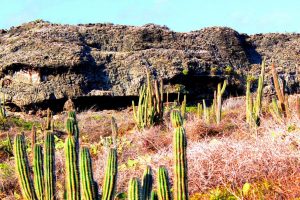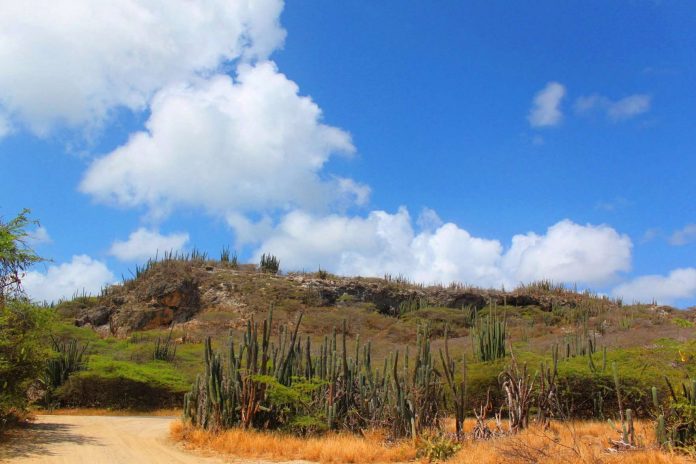Each week, Etnia Nativa presents a new episode about cultural heritage, focusing on native knowledge, transcendental wisdom, and the importance of defending the true heart of Aruba. It connects the reader to that mystical aspect of the island’s culture and traditions, encouraging everyone to interact with our unique environment. This episode shares about the limestone landscape that surely captures the visitor’s attention due to its outstanding terraces with little vegetation.
During your discovery tour of Aruba, you will be able to differentiate between three basic geological formations: a hilly part, a wavy part, and a third formed precisely by limestone as the accumulation of corals and shells in the sea compacted together for the last 540 million years. Embracing the land visible, it forms the coastline on the north and east coasts of the island. However, you can also find similar landscape spots inland on the island in places like Frenchman’s Pass, Canashito, and Isla, for example. Inland limestone’s areas are an exception because these areas are typically surrounded by a quartz diorite landscape. The combination of limestone and quartz diorite also results in permanent freshwater sources, like in Fontein. The limestone filters rainwater collected over the years and releases this water at the edge where the limestone meets the quartz diorite.

Limestone is exposed over large regions of the island’s surface, and because limestone is slightly soluble in rainwater, these exposures often erode into karst landscapes, a type of landscape where the dissolution of the bedrock has created sinkholes, sinking streams, caves, springs, etc. In Aruba, the most remarkable geological features of the limestone landscape are the caves. They were formed by the dissolution of limestone by rain and groundwater, being exposed to changes in sea level and upward tectonic movements of the earth’s crust. For obvious reasons, the majority of pre-ceramic sites are situated in limestone areas. At Canashito, five individuals belonging to this archaic group were buried in an open space on a big limestone outcrop.
At Malmok Cemetery, 70 individuals were buried beneath large chunks of limestone. The ceramic sites found on limestone show no signs of long-term habitation, as these areas lack suitable agricultural soils (unless they occur in association with a quartz diorite (QD) landscape), making the hydrological conditions somewhat more favorable for some freshwater sources in these areas. Also, one ceramic burial has been found in a limestone cave, being one of the four historic activities that have been recorded in the island`s caves.
Prehistoric groups also used several of these limestone caves for their pictographs. Fontein, Guadiriquiri, and Canashito exhibit fantastic rock art transmitting ancient expressions of existence out in the limestone, while in Rooi Thomas and Rincón, the drawings were made in a large open limestone space facing the salty winds. However, no limestone tools have been found associated with these prehistoric groups because the softness of the rock could be considered a debilitating factor for most tools. A variety of limestone called crystalline limestone has been used to make human figures. Furthermore, all of these categories of rocks can also be divided into crystalline rocks of the Aruba lava formation (batholith), basalt, gabbro, etc., which are impermeable, and limestone, which has the natural components of the more recent landscape.
So if you are interested in really getting to know everything about all Aruba’s rock types, whether it’s geology, flora, or fauna, the island’s history from prehistoric times, and much more as our unique autochthonous art, and interacting with the true identity of your gorgeous trip destination, book a visit to Etnia Nativa, a unique native gem! Let Anthony, our acclaimed cultural columnist, guide and lecture you regarding the most interesting and revealing stories about Aruba’s undiscovered Etnia Nativa, an adventure beyond beaches and tourist traps. Visit his magnificent dwelling that integrates natural and reused materials, bursting with culture and island heritage, and you’ll love Aruba beyond beaches!
Appointments and confirmations trough WhatsApp +297 592 2702 or etnianativa03@gmail.com.




















